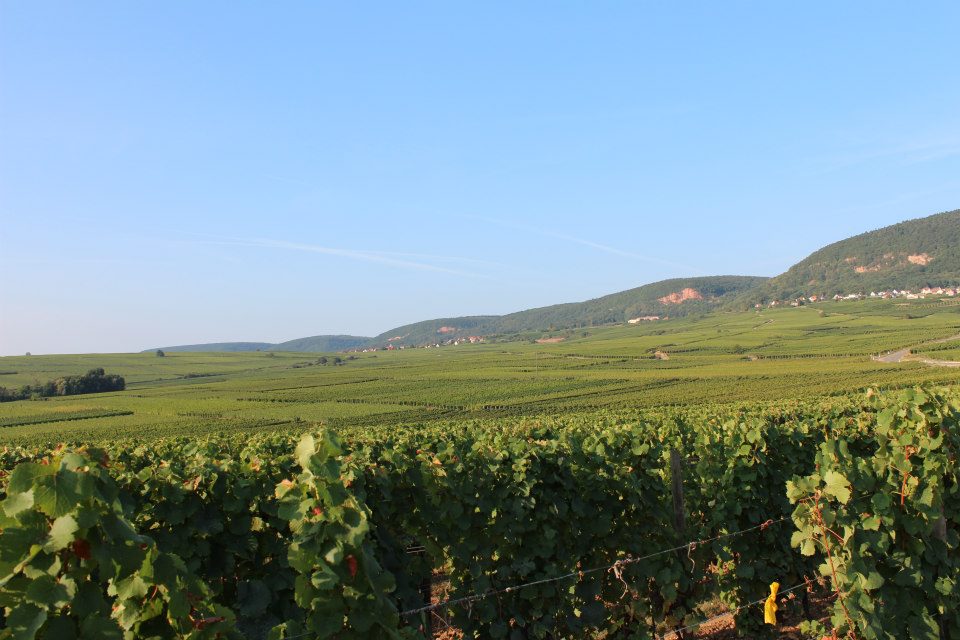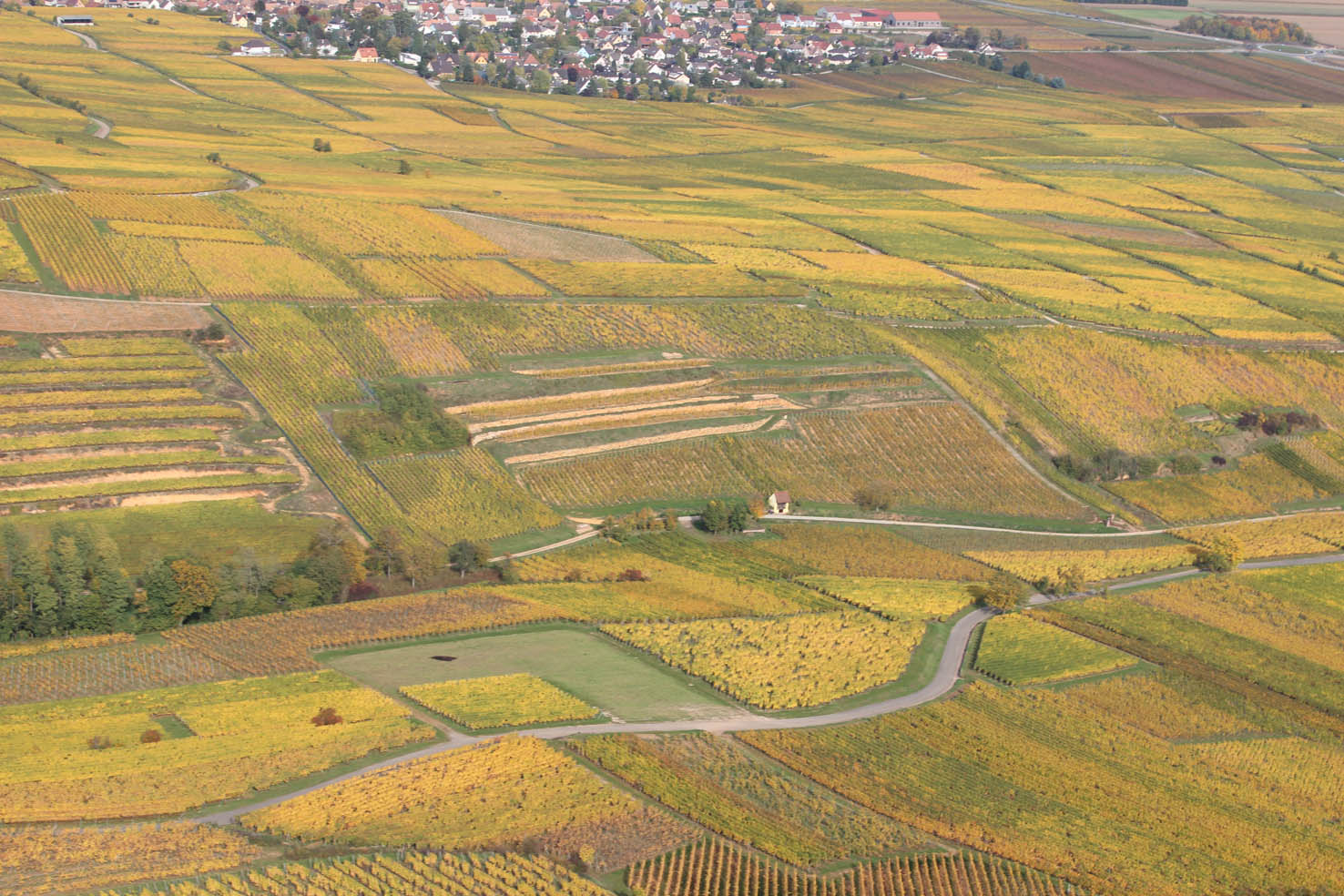Terroir wines
Clay, Limestone or Granitic subsoils
Grand cru Eichberg
Southwest of Eguisheim, the Grand Cru Eichberg stretches over two gentle slopes southeast exposed, at an alitude between 220 and 340 metres. Below the three castles, this vineyard at the northem edge of Rouffach fracture zone, is sheltered by the Vosges foothills. This site enjoys a particularly dry and warm microclimate , with the lowest rainfall recorded in the Colmar region.
The subsoil consists mainly of Tertiary conglomerates and marles. The boulders of limestone are less frequent here than those of Vosges sandstone and even some granite boulders at the east rim of the vineyard.
Moreover, Quaternary talus slope partly covers the conglomerates. They make a clayey soil with sandstone rubble, becoming calcareous with increasing depth.
The total surface area of grand cru Eichberg is 57.62 ha. Its soil type and climate are suited to Riesling, Gewurztraminer and Pinot Gris.
The exceptional quality of Eichberg wines has been recognized since ancient times. According to the historian Médard Barth, Marbach Abbey, founded in 11th century, received tithes on vineyards situated at Eisssche, the original name for the present-day Eichberg.
Opulent and full, the wines from this vineyard display finesse and remarkable fruit. Without any doubt, these wines are predestined for long life, whilst maintaining their varietal Character and Aaromas.
Grand Cru Pfersigberg
Protected from oceanic influence by an impressive massif of moutains the pfersigberg’s slopes face east-south-east and are particularly well-exposed to the sun. The stony conglomerate subsoil of the hillside is formed of various limestone pebbles : very hard grey Muschelkalk (mid-trias) and less resistant yellowy mid-jurassic. The limestone-marl soil issued from this bedrock can be classifed as calci- magnetic, with high limestone contebt, thus of rendzine type with an alcaline pH of 7.7 to 8.
In this type of clay silt textured soil, water-retention is average, and si the soil colour and low humidity favourise the radiance of intense heat, which leads to early ripening of the grapes.
Covering 74.55 ha, the Pfersigberg is ideally suited to Gewurztraminer, while Pinot Gris, Riesling and Muscat d’Alsace also develop great richness, elegance and finesse.
The Pfersigberg is mentioned from 16th century in leases signed between the notability and convents. More recently, at the very first Colmar Wine fair in 1927, the winegrowers of Eguisheim distingished themselves with Pfersigberg wines.
Grand Cru Kaefferkopf
Divided into several sectors which enclose the South and West sides of the charming little town of Ammerschwihr, and covering a total of 71
65 hectares, the Kaefferkopf hillside faces mainly Esat, with a slope of 10% to 20% but reaching 35% in places, at and altitude of between 240 and 350 metres.
It is characterised by a complex geological substramu, conbining granite on its upper parts with shelly limestone then sandstone lower down. The resulting soils are quite varied, altough they retain the overall typological classification of brown soils saturated with calcium and magnesium.
The Kaefferkopf’s longstanting historical reputation made it one of the jewels in the crown of Alsace vineyards, and it was granted judicial protection as far back as 1932, long before even the concept of Appellation d’Origine Contrôlée had emerged.
The complexity of its soils, together with the quality of its climate, make the kaefferkopf an ideal side to plant single vine varietis such as Riesling, Pinot gris, and Gewurtraminer, as well as the blends of grapes which are one of the characteristics of tgis Grand Cry vineyard.
All these wines are capable of revealing their signature elegance allied to powerful aromas.



